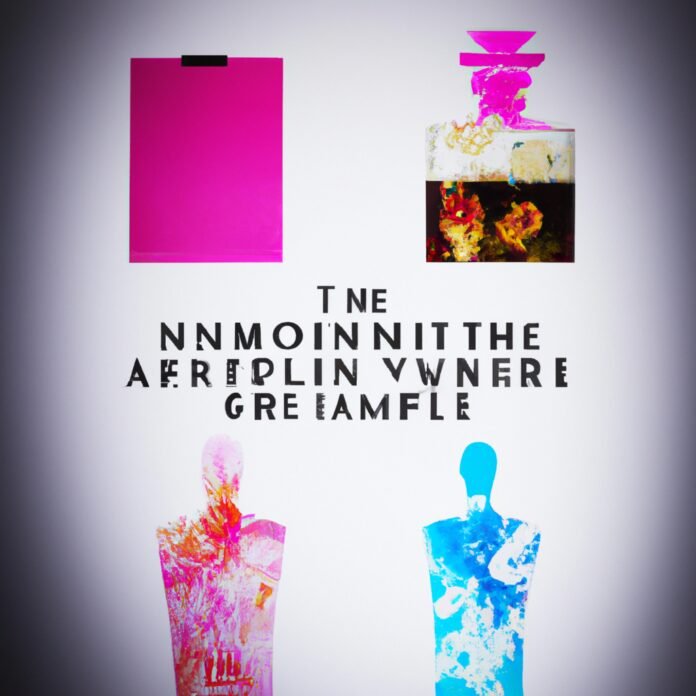The exotic allure of perfume is unlike any other. Those alluring scents and surreal aromas tantalize and encourage us to explore. But have you ever stopped to consider the inspiration behind the seemingly enigmatic labelling of your favourite perfume bottle? What does it take to capture the scent and essence of a perfume in just a few words? The art of perfume naming is a fascinating part of our olfactory experience, and to help us understand it better, we now explore the inspirations behind these captivating labels.
1. Unlocking the Mystery of Perfume Naming
When it comes to perfume, it is often said that a name can make or break a scent. Perfume names are steeped in tradition and symbolism, with each scent’s title depicting its unique characteristics that are meant to provoke a certain emotion or thought. In this article, we’ll take a closer look at the secret world of perfume naming and uncover what lies beneath.
Origins of Perfume Terms
The names used in the fragrance industry date back centuries, with many of the terms we still use today having roots in ancient Greek or Latin. The majority of scent titles are composed of either two or three-part words, with each part having significance in its aroma. An example of the latter is Chloe, which in Greek translates to fresh and floral – characteristics that are instantly recognizable in the overall aroma of the scent.
- When two-part scents have a name that ends in eau de parfum, the eau comes from the French word for water and refers to the water-alcohol mix which generally makes up the base of a perfume.
- Some two-part names such as Aqua di Gio also find their origins in Italian, with Gio translating to joyful.
Marketing a Perfume in its Name
In addition to the roots of perfume terms, the name of a scent also has an effect on how it sells and how it’s perceived by its audience. Perfume makers often use romantic and creative language in the titles of their fragrances to conjure up images and emotions of luxury, beauty, and pleasure. Consider popular perfumes like Paris by Yves Saint Laurent and Lovesome Love by Dior. Both evoke feelings of love and Parisian romance, while their titles alone create an atmosphere of desire and romance.
2. An Artful Quest for the Perfect Perfume Name
The quest to find the perfect name for a perfume can be a long and artful one. Before settling on one, careful consideration must be taken to ensure that it captures the essence of the unique scent.
Things to consider when choosing a perfume name
- The story of the scent
- The culture, era, and geographical area used for inspiration
- The brand name
- The marketing opportunity
A great perfume name will draw people in, sparking an emotional connection that leaves a lasting impression.
Perfume names should always be memorable and appropriate for the target audience. It can be a challenge to find one that captures the scent and conveys the story behind it, but with a bit of creativity, the perfect name is just around the corner.
3. Capturing the Essence of a Perfume Through Naming
A good perfume name can make all the difference when it comes to capturing the essence of a scent. It provides a clue – a visual, metaphorical snapshot – into what the perfume is all about. It needs to be memorable, evocative, and special. If done right, it will give the perfume an identity and personality all of its own.
Perfume naming is no easy task, and there are several factors that come into play. What inspires the creator, for example? Is there a certain theme or narrative that ties the scent together? Is the protagonist a person, a place, or a memory?
When it comes to capturing the essence of a scent through its name, brevity speaks volumes. A name should be simple, yet powerful – conveying volumes of emotion in just a few simple words. Here are some guidelines to consider when coming up with a name for a perfume:
- Be descriptive: Describe the scent as accurately as possible, using words that evoke emotion, such as “warmth” or “intrigue”.
- Be unique: Make sure the name is unique, so it stands out from the competition.
- Avoid over-promising: Don’t make claims that the perfume can’t actually deliver on!
- Create a story: A compelling story behind a perfume can take it from ordinary to extraordinary. What is the story that the fragrance is telling?
When it comes to naming a perfume, the sky’s the limit. Just remember to use the words you choose to paint a vivid, captivating portrait of the scent that will leave an unforgettable impression on everyone who smells it.
4. Exploring the Creative Inspirations Behind Perfume Labels
Before you pick up a bottle of perfume at the store, have you ever considered the immense creative labor and artistry that goes into its design? An iconic perfume label can become forever etched into our collective memory, from movie stars to members of the aristocracy, each bottle of perfume has forged a legacy of its own.
The perfume label plays an integral role in the product’s appeal. In fact, it can become as memorable as the scent itself, imbuing historical figures in our imaginations. The motifs, typography, artwork, and graphics of a perfume label are carefully curated to bring a brand and its values to life.
The inspirations behind these visual stories may come in a variety of forms. Some incorporate powerful symbols of nobility or royalty. Others take cues from nature and the beauty of its surroundings. Below, we will explore the creative inspirations behind some of the world’s best-loved perfume labels.
- Louis XVI: Taking historical inspiration from the iconic royal families of Europe, the French Palace of Versailles adorns the bottle of this stylish scent by Nina Ricci.
- Coco Chanel No. 5: Coco Chanel’s classic perfume is perhaps best known for its bold and timeless art deco style. The black-and-gold bottle, as well as the double C symbol, are evocative of Coco Chanel’s iconic fashion.
- White Linen: For the world-renowned scent from Elizabeth Arden, an antique vase patterned with a field of white linen poppies was the inspiration behind the bottle design. This subtly alludes to the crisp and refined notes of the scent.
- La Vie Est Belle: Lancôme’s iconic scent captures the essences of living la vie en rose (a life of pleasure). Its modern packaging, featuring a 3D engraved ribbon motif, is at once both femininity and luxurious.
From subtle yet stylish designs, to boldly artful conceptions, perfume labels represent the visual explorations of the creative minds behind them. As much as we remember the timeless scents they possess, it’s the look of the bottle that will always remain truly unforgettable.
5. Crafting the Ideal Name for a Captivating Fragrance
When it comes to creating the perfect fragrance, a lot of thought needs to go into choosing the ideal name. A name that is memorable and captivating is key to ensuring your fragrance stands out from the crowd. Here are 5 tips for :
- Think about the feeling you want to evoke. Your name should be relevant to your fragrance, and evoke the feeling you want people to feel when they wear it.
- Go for something unique. While names like ‘Lavender Love’ or ‘Jasmine Dream’ can be engaging, they are also quite generic and have been used by many other brands. Try to come up with something unique that stands out.
- Remember brevity. Avoid too-long names that may be tricky to remember. For instance, ‘Ethereal Magic Sunset Elixir’ can be overwhelming and difficult to remember. Try to keep it simple and concise.
- Incorporate imagery. Pick words that are evocative and create imagery in people’s minds. For example, ‘Siren Song’ conjures up images of a powerful sea-dwelling creature.
- Use alliteration for impact. Alliterations add a pleasing rhythm to your fragrance name and make it stand out. Examples include ‘Jasmine Joy’ and ‘Heavenly Haze’.
Choosing a captivating name that adheres to the above tips can be a tricky task. Take your time and experiment with a few options until you find the name that you feel encapsulates your fragrance perfectly.
From modern romanticism to historical symbolism, the art of giving a name to a perfume encapsulates the stories, emotions, and flavors that are hidden within it. This complexity gives life to the brands that have hypnotized, excited, and seduced us with their sensational fragrances. It speaks to the power of alluring names that can evoke senses and emotions that linger in the air more than the scent itself.



